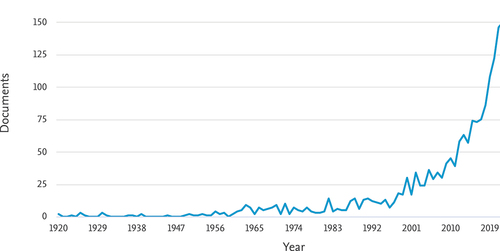It is self-evident that having good vision is a pre-requisite for holding a car driver’s licence. Having sufficient visual acuity is an obvious starting point, but other visual attributes are equally important, such as adequate visual fields and colour vision. Optometrists are frequently called upon to assess visual function – measured against prescribed standards of acceptability – for individuals seeking a driver’s licence, and of course those in control of other forms of transport, such as motorcycle, truck, tram and train drivers, and aeroplane pilots.
It is also important that the road environment is engineered to optimise the ability of drivers to visualise other vehicles, signs, traffic lights, other warning lights, pedestrian and children’s crossings, lane markings, roadside cones, road surface defects, and other potential obstacles. Drivers need to able to see others who may sharing the road environment, such as pedestrians, stray animals, cyclists, police and emergency service personnel. The ability to clearly see – and then interpret and react – to all of the above may also be impacted by ambient light conditions (day-time vs dusk vs night-time) and weather conditions (rain, hail, snow, fog, and dust).
The knowledge base that underpins these considerations needs to be generated by researchers from a variety of disciplines. Using modern bibliometric search tools, it is possible to gain insights into the magnitude of this literature base, and the individuals, disciplines, institutions, and countries undertaking this work.
Bibliometric analysis
To construct a search term to capture all of the literature relating to driving and vision would be an onerous task and beyond the remit of this editorial; nevertheless, I have undertaken a crude search by deriving a search equation designed to capture the essence of this literature. Specifically, a bibliometric analysis was undertaken on 24 October 2022, using the Scopus database. The following search term, which afforded moderate sensitivity and specificity for identifying literature relevant to driving and vision, was used:
TITLE (drive OR driving OR driver) AND TITLE (vision OR visual* OR visib*) AND NOT TITLE (“visible light” OR “visible-light”) AND (LIMIT-TO (SRCTYPE, “j”)) AND (LIMIT-TO (LANGUAGE, “English”))
This search revealed a total of 1,736 documents which have been cited 35,994 times, although 19% of these papers have never been cited. The combined h-index of this body of literature is 87.
shows a cumulative frequency graph of the number of papers published in the ‘driving and vision’ literature each year between 1920 (around the time motor vehicles were becoming available throughout Australia) and 2022. It is evident that very few papers were published until the 1960s. There was then a slight increase in the number of publications, which did not exceed 15 papers per year until 1998, after which time rate of publications began to increase exponentially. Almost 150 papers were published in this field in 2022.
Figure 1. Number of papers published each year in the field of ‘driving and vision’ between 1920 and 2022.

A h-index for “driving and vision” (the “hDV-index”) was derived, to serve as a measure of the impact of the search undertaken by authors publishing in this area. I devised this paradigm and have applied it extensively; details can be found elsewhere.Citation1 Using this approach, the ten most impactful researchers in the field of driving and vision were compiled and are listed in in rank order of hDV-index. The author ranked #1 is Joanne Wood (hDV = 23; n = 50 papers).
Table 1. Ten Most impactful authors in the field of ‘driving and vision’, ranked by hDV-index.
The most prolific disciplines working in this field are medicine (n = 676 papers), engineering (671), social sciences (373), computer science (295), neuroscience (259), psychology (207) and health professions (162); it is likely that contributions from optometry have been variously included in the ‘medicine’ and ‘health professions’ categories.
The most prolific institutions are the Queensland University of Technology, Australia (n = 55 papers), the University of Alabama at Birmingham, United States (39), the CNRS Centre National de la Recherche Scientifique, France (24), the University of Michigan, Ann Arbor, United States (22) and the Swedish National Road and Transport Research Institute, Sweden (22).
The nations that have produced the most papers are the United States (n = 496 papers), China (216), the United Kingdom (192), Australia (127) and Canada (104).
Professor Joanne Wood – driving vision research
In the context of the above background, we salute the career of Professor Joanne Wood, who has been awarded the H Barry Collin Research Medal by Optometry Australia for her outstanding contributions to ophthalmic research, especially as it relates to driving and vision. As demonstrated above, Professor Wood is the most impactful researcher in the world in the field of ‘driving and vision’. This issue of the Clinical and Experimental Optometry features Professor Wood’s Collin Medal paper, describing her innovative work that has paved the way for developing strategies for improving the conspicuity and safety of pedestrians and cyclists on night-time roads.Citation2 A profile of the impressive career of Professor Wood is also presented in this issue of the journal.Citation3
References
- Efron N, Morgan PB, Jones LW, et al. Bibliometric analysis of the refractive error field. Clin Exp Optom 2021; 104: 641–643.
- Wood J. Improving the conspicuity and safety of pedestrians and cyclists on night-time roads. Clin Exp Optom. 2023; 106.
- Efron N. Professor Joanne Wood: internationally acclaimed authority on vision and driving. Clin Exp Optom 2023; 106. doi:10.1080/08164622.2022.2134764.
